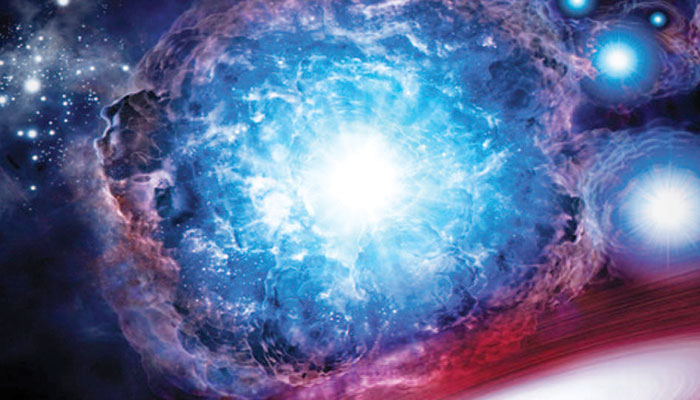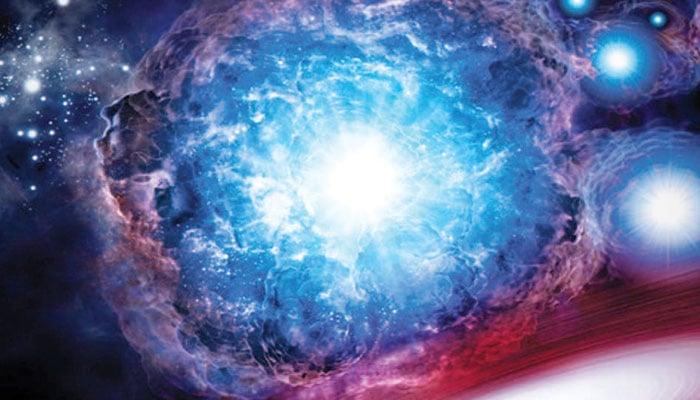
Man is perhaps the most curious creature in this world, who is always in search of not only his environment but also every object of this vast universe, to know its truth. This search has taken him today to the moon, stars and galaxies billions of light years away. Among the questions that have always been in his mind is the discovery of some of the ultimate secrets of the universe. It has been done and many more are still to be discovered.
The series of scientific research, questions and answers and discoveries that have been going on for thousands of years are in place, but due to the scientific revolution that took place in Europe about four hundred years ago, thousands of years old views and assumptions were declared wrong. Along with the flow, new principles were developed in physics, and instruments were developed that helped to understand the origin and origin of the universe to a great extent. Mankind is still trying new ways to make a comprehensive and clear picture of the universe. You must have heard the name Big Bang.
It is an English language word, which means big bang. The Big Bang is the explosion that created our universe. According to this theory, before the universe came into being, all matter was contained in a very small space equal to the thousandth of a needle. If matter has a lot of energy, more than any other source of energy in the world, gravity becomes a force that pushes things away from each other instead of pulling them together. So according to science, this is the bug. The Big Bang was the starting point, when all matter began to move away from each other very rapidly after an explosion-like event and spread out into space.
At that time, due to its speed being so high, this universe began to expand rapidly. Most of you will think that how can anyone tell the age of the universe? So the answer has been given to us by “Hubble Space Telescope”. The oldest galaxy we find in images taken with this telescope is 13.4 billion light-years away from Earth. A light year is actually not a measure of time but a measure of distance and one light year is about 10 trillion km.
With its explosion, matter spread into space and the universe began to expand rapidly
This is the distance light travels in one year. Now you can estimate yourself that where one light year is equal to 10 trillion km, then 14 billion light years will be equal to how many km. If we could measure how many years it took for light from a distant star or galaxy to reach us, we could thus trace the oldest galaxies. The oldest galaxy we have observed so far is 13.4 billion light-years away, so we can say that the age of the universe is around it.
Let’s go back to the conditions after the creation of the universe. 14 billion years ago, there was no sun, no stars, no galaxies, no visions, but only a huge explosion of hydrogen gas. There were clouds. In the parts of these clouds in space where the amount of hydrogen and helium was high, the gases began to contract and shrink to form very hot bodies that we call “stars”.
Furthermore, around those stars where the amount of gas was low, the gas contracted and formed hot (less hot than the stars) bodies that were smaller than the stars, and due to the strong attraction of a nearby star larger than itself. began to orbit around (the star). We call these bodies planets. Due to the attraction of many stars, they formed into clusters and thus galaxies came into being. The galaxy in which our Sun and Earth are located is called the Milky Way. It is named the Milky Way because many of its stars appear white, giving it the appearance of a “milky way.”
When the Earth was formed, it was rotating very fast around both its axis and the Sun and gradually cooled. The appearance of the earth at its birth was exactly as if volcanoes were erupting everywhere. But as soon as the temperature started to decrease, life started to emerge. Then there was no man, no animal, not even the smallest organism, bacteria.
But even then, the elements that gave birth to all of them, namely minerals, were present on the earth, then chemical evolution began, in which small cells of these minerals were mixed and molecules were formed, and then from the mixing of these millions of molecules, such cells came into being that themselves They were able to make their own food using sunlight, and each of them had a basic principle that each cell would multiply from one to two before dying, thus continuing to multiply. These bacteria were organisms that did not need oxygen to survive, but they produced their own oxygen. As their number was quite high, the amount of oxygen in the atmosphere on earth started to increase.
As the amount of oxygen in the atmosphere increased, chemical evolution (i.e. the process of forming cells from matter) stopped, which is the reason why today no living things are formed from non-living things. Evolution is not a process of hours, days, or years, but it is a long chain, each link of which takes centuries to connect. Now, after chemical evolution, biological evolution started, i.e. the process of formation of small organisms into other larger organisms.
The evolutionary process that began with bacteria led to the formation of multicellular organisms, the first of which were fish, followed by both terrestrial and aquatic organisms (including frogs). Then reptiles (including lizards, crocodiles, etc.), then birds, and finally mammals (including sheep, goats, cows, humans, etc.) gradually came into existence.
setTimeout(function(){
!function(f,b,e,v,n,t,s)
{if(f.fbq)return;n=f.fbq=function(){n.callMethod?
n.callMethod.apply(n,arguments):n.queue.push(arguments)};
if(!f._fbq)f._fbq=n;n.push=n;n.loaded=!0;n.version=’2.0′;
n.queue=[];t=b.createElement(e);t.async=!0;
t.src=v;s=b.getElementsByTagName(e)[0];
s.parentNode.insertBefore(t,s)}(window,document,’script’,
‘https://connect.facebook.net/en_US/fbevents.js’);
fbq(‘init’, ‘836181349842357’);
fbq(‘track’, ‘PageView’);
}, 6000);
/*setTimeout(function(){
(function (d, s, id) {
var js, fjs = d.getElementsByTagName(s)[0];
if (d.getElementById(id)) return;
js = d.createElement(s);
js.id = id;
js.src = “//connect.facebook.net/en_US/sdk.js#xfbml=1&version=v2.11&appId=580305968816694”;
fjs.parentNode.insertBefore(js, fjs);
}(document, ‘script’, ‘facebook-jssdk’));
}, 4000);*/



